Christine and Francis Working Together
The Vercors Massif in southeast France rises half a mile high, creating a natural fortress, crisscrossed with forests, farmland, ravines, caves, and secret paths. There are eight gateway roads but only one that’s easily accessible. In 1942 the Vercors was a gathering place for the Maquis.
The Maquis was born when the Allies began their North African campaign, which prompted the Germans to broaden their occupation to all of France. When the Germans began conscripting young French men to work in factories in Germany, it caused an exodus of men to the hills and forests. The largest concentration of these guerilla fighters was in the Vercors Massif.
Someone had the heady idea of creating a free French republic on the Vercors right there in the middle of occupied France. They hoisted a French flag where it could be seen by and could irritate the German garrison in Grenoble. Men—and women– had outlooks above all the approaches and could pick off the Germans if they tried to enter the plateau. The maquisards crept into towns in the area, stole equipment, firearms and vehicles and blew up train tracks and bridges, and then disappeared back onto the Vercors. For a while this worked beautifully but in the long run, this use of the Vercors as a permanent home for the Maquis was naïveté looking for a tragedy.
While this was the situation on the ground, back at HQ there was internecine fighting amongst the De Gaullists, S.O.E, and MI6. London had no control over the Maquis, many who were communists with their added agenda, but S.O.E. had to contend with everything: the out of touch bureaucracy in London, the testosterone of the very angry French, the Communists, and the American OSS, which wouldn’t play with either the Communists or De Gaulle. Subterranean politics over who would control France after the war was responsible for a lot of what we cynically refer to as “Casualties of War.”
In any case, in the run-up to D-Day, S.O.E. had the job of creating an illusion that there would be landings on both the north and south coasts of France simultaneously in order to keep part of the German army on alert in the south. Then when the landings began on the Normandy beaches, sabotage all over the country would prevent troops from moving north. All of this did happen to some extent. Eisenhower calculated that S.O.E. shaved six months off the length of the war by these methods.
The Vercors was part of this diversionary activity with devastating results. Close to D-Day, Maquis leaders on Vercors got an order from S.O.E. southern headquarters in Algiers to mobilize and start an uprising to divert German attention. All over the area men left their families and joined the Maquis for this final push. The Vercors was in Francis Cammaerts’ Jockey network and he was a regular visitor to the plateau. When he got wind of the situation, he pointed out that the Vercors didn’t take orders from Algiers, but from London. When the cock-up got straightened out, London naïvely ordered the men to go home where they would have all been rounded up by the Germans and shot.
Now the Free Republic was a prison of a ragtag bunch of men and boys with limited means of defending themselves and little training. Their only advantage was their knowledge of the terrain. Wire after wire went out requesting supplies and back-up and for the nearest airfield to be bombed because the Luftwaffe was massing there. On July 14, Bastille Day, there was finally a huge parachute drop of supplies onto the Vercors. Unfortunately it came in daylight, also visible to the Germans. As the French tried to collect the hundreds of canisters, the Germans launched their attack on the Vercors. Tanks roared up the passes and the Luftwaffe attacked by air. Towns were razed and people were killed with grotesque sadism. A hospital that had moved from a town to a cave was massacred, patients and staff.
Christine Granville had been parachuted into this mess as Francis’ new courier. During the Bastille Day drop and subsequent German attack, she reportedly spent days searching out, unpacking and distributing every canister she could find. Danger really got her going.
Christine and Francis immediately took to one another. Both had initiative, energy and charm. When the Germans attacked the Vercors, initiative, energy and charm didn’t go very far. Christine and Francis were part of a small party that was able to escape. Christine moved on to charm a group of Polish POWs near the Italian border who had been conned into working for Germany into changing sides again. While she was at this task, Francis was captured with two of his men and jailed in the town of Digne.
Here is Christine at her most audacious: She marched into Gestapo headquarters in Digne, bluffed a man called Waem. She told him she was Field Marshall Montgomery’s niece and a British spy. She wanted the three English prisoners released in exchange for safe passage for himself out of France. By now the Americans had landed on the south coast and were heading inland so this was a shrewd inticement.
On the morning that Francis and his two companions were to be shot, they were marched out of their cell by Waem. But instead of turning them toward the soccer field that was used as a place of execution, he herded them into a car. Past a patrol point and around a corner, there was Christine waiting by the side of the road. She got into the car and they drove to safety.
Francis lived to be 90 years old. He worked for Unesco, and created an international system for the exchange of schoolchildren in western Europe. He was a professor of education at Nairobi University in Kenya, then head of Rolle College at Exeter. He and his wife Nan retired to France where he lived among former members of his circuit until his death.
Christine did not do so well. She belonged to the war, and to danger and adventure. The British government dismissed her as “no longer needed” after the war. This happened to many of the S.O.E. agents; maybe because so much has been written about her that it seems particularly malicious in her case. She was not given military honors by the British although she was by the French and Polish. Official intervention on her behalf could not get her British citizenship. She ended up working as a stewardess on a cruise ship.
On one of her voyages, she became acquainted with an unstable young man–George Muldowney– who began to stalk her. One night –the night before she was to leave England to meet with a former lover on the continent and with high hopes for the relationship, Muldowney stabbed her to death in the lobby of her hotel. She was 44 years old.
Every bio of Francis and Christine and every overview of S.O.E. tells the Vercors Story and the audacious escape at Digne. Xan Fielding, one of the two men captured with Francis, writes about their capture at Digne in Hide and Seek, a book he dedicated to Christine.
One book that is devoted entirely to the story of the Vercors is Tears of Glory by Michael Pearson.
 RSS Feed
RSS Feed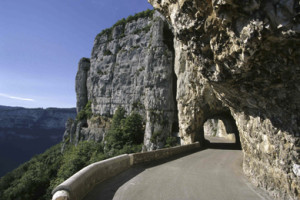
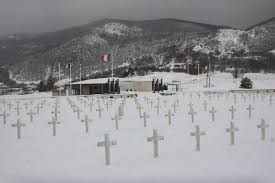
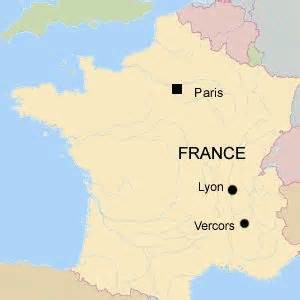
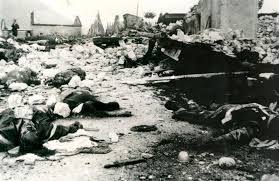

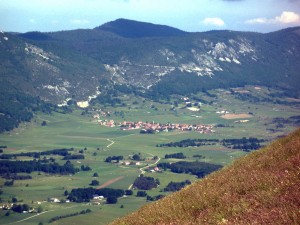
This is so interesting! I just finished reading 2 books on the French during WWII, but knew nothing about the Vercors story. The Maquis were active all over France and certainly helped the success of D Day. Both books – All the Light You Cannot See and The Nightingale – are about French women who became Resisters. It is a story that is finally being told.
Thank you so much, I have been reading about the French Resistance for a while and I am so grateful to find out that there are still people interested in WWII. Any war is a mess and I am so happy not to witness any of it myself but I am convinced that we shouldn’t simply forget all the brave who sacrified the best years of their youths to be able to live with dignity. I take my hat off to them.
I knew Francis Cammaerts for about 20 years before his death and he was fascinating in many ways but the most powerful day I spent with him was up in the Vercors. I was standing with him in the cemetery when a man who had fought with him in 1944 came up. Recognised him 40 years later. But the most profound moment was going to the cave where the hospital was and the Germans murdered the medical staff and patients. That was an unforgettable experience. A bit like visiting a concentration camp memorial I think.
I completely agree we should never forget the people who fought to end that kind of horror. Or more importantly the horror it self.